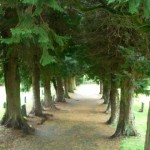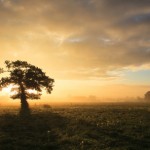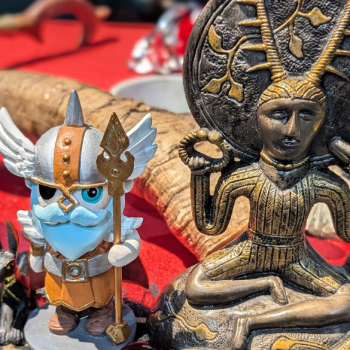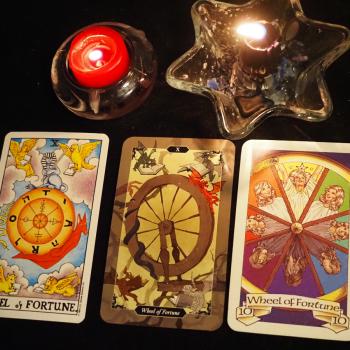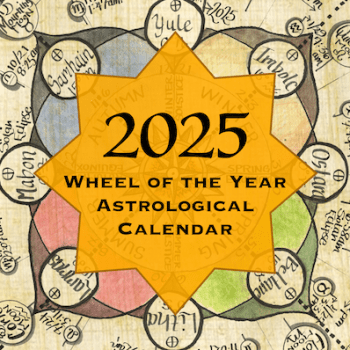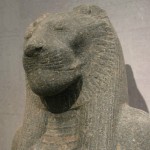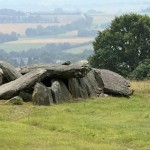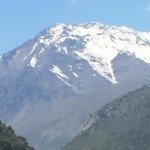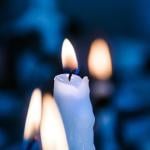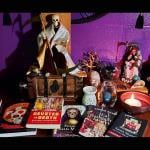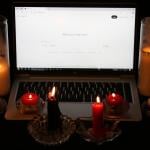Why fear ye the Dark Queen? She is the Renewer.
From sleep we arise refreshed; from death we arise reborn…
Dion Fortune (2003 ed.) The Sea Priestess Boston, MA: Weiser Books, p. 165.
First published 1935.
Those of us who were privileged to represent our Pagan communities at the 2015 Parliament of the World’s Religions in Salt Lake City, Utah, this month are still digesting what we saw, felt, experienced, received, and gave.
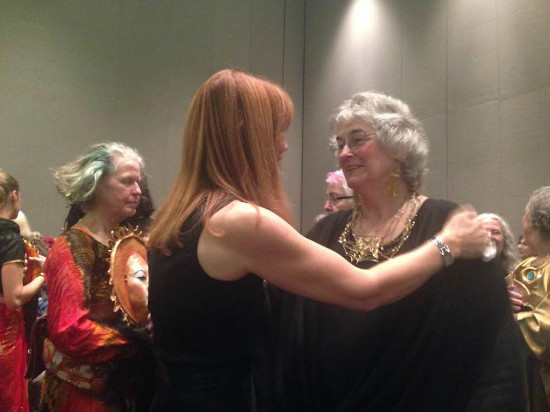
Bridging the divide
Thanks to the work of Pagan pioneers – Phyllis Curott, Andras Corban-Arthen, Angie Buchanan, and others – the Parliament embraced us. We found ourselves creating and leading multifaith ceremonies; meeting indigenous leaders; debating actions on climate change; sitting on panels to share ideas about pastoral counseling, about what it meant to be a priestess; presenting Goddess spirituality to people of all nations, ethnicities and faiths.
Above all, we found ourselves doing all those things that make so much difference in the margins – in the interactions that happen on the escalator, in the food queue, at the registration desk. We were striving in our thoughts, words, and actions, to bridge the gap between self and ‘other’, between ‘your’ way and ‘my’ way, and to overcome within ourselves the psychological barriers that prevent us reaching out to others of like mind; the divisions created because of differences of label, dress, ethnicity, and custom.
The Parliament with its 10,000 participants was for many of us a long journey, not just in miles and kilometres, but also in mind and spirit. We encountered those from religions and that we had long-rejected and which seemed to us alien, ‘other’, and maybe even distasteful. And, as in all such events, we found that external appearances and symbols could, when penetrated, lead to the discovery of and connection with people we would never normally have met – above all people of like mind. For me, these connections have deepened my connection to my own traditions and practice, while making me more willing to engage with others whose spiritual and religious traditions are so different from mine.
For many of us who went to Salt Lake City, Pagan and non-Pagan, this point of the seasonal cycle does seem like a new beginning.
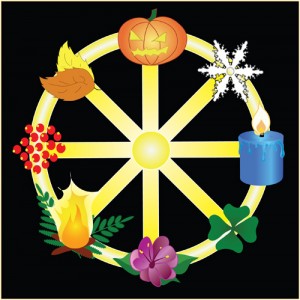
In recent decades, we have become accustomed to think of Samhain as the beginning of Pagan New Year. For many of us, this is a new idea. The Pagan revival of the twentieth century drew from many ancient Paganisms – Minoan, Greek, Roman, Germanic, Scandinavian, Slavic – as well as that of the Celts.
The idea that October 31st is the New Year derives from an interpretation of a particular Celtic calendar, spread through interpreters such as Janet and Stewart Farrar and others, who moved the Wiccan calendar of my early years in Wicca which saw the Spring Equinox as the year’s beginning to place New Year in mid-Fall. For me, Samhain is not New Year, but it is a festival that celebrates the human instinct to come together at the beginning of the cold season to cement the bonds of community and to celebrate what we have achieved over the summer.
As the sun-wheel turns and we reach Summer’s End, our instinct is to feast together as the dark hours grow longer. We draw together not just on this plane, but also on the next. Samhain’s polar opposite is Beltane, a festival that celebrates communion of bodies. Samhain celebrates communion of spirits. We have communication with the Otherworld, those no longer present in the physical body, but who draw close to us in the autumn mists when boundaries between night and day, vision and dream, are fluid. The spirits of those who are close to us come near – our tribe of body and blood, as well as our spiritual tribe – those who we have circled with, those with whom we have poured the ritual libations, with whom we have joined in emotional linkage to make magick or voyage into the spirit.
Embracing other-ness
‘Drawing close’ sounds cozy and comforting, but like all encounters with that which is different and ‘other’ is it challenging on deep emotional and spiritual levels. To draw close to the dead, we must we willing to accept death and this is something that we human beings find difficult to do.
The most difficult deaths for us to accept are those who we do not expect to die –the younger generations who die before us – our children, our initiates. Instinctively, we expect that the natural order should assert itself. Deep within us, we believe that those who come after should outlive us. When they do not, when fate snatches them cruelly from our world before their ‘time’, this is the most difficult of all things to accept. It is particularly difficult when we have unfinished business – things unsaid, things said that should have been kept silent.
Death and grief are often mixed with anger. The complex interplay of human relationships often becomes entangled, the heart strings stretched until breaking point, when all those things unsaid, those feelings unexpressed, cannot now never be said. Death is a huntress, a stalker, a stealth missile. It comes in the night like a thief and steals away that which is most precious to us. We cannot hear its footsteps; we do not know that it is coming. Our ancestors feared and appeased it, worshipped it, and placated it. It is it the inevitability – the silent and dread gate through which we all must pass.
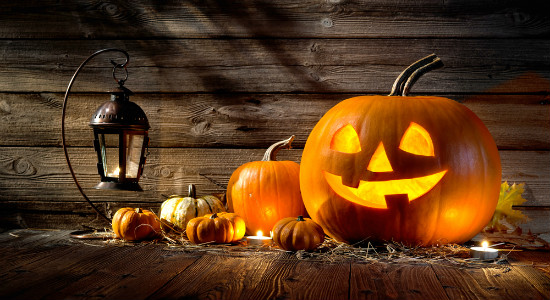
Facing death by embracing life
Our rituals teach us the way to face death. We accept it as part of life’s cycle, an inevitable part that comes like a test. In past eras, our ancestors talked of a ‘good death’. This was a death in which we are able to reflect on our life and its ups and down and to come to terms with what has passed, a death through which we can face the future of eternity with equilibrium and equanimity; resting in the assurance that we had lived the time allotted to us in its full.
To be ready for death, we must have lived – to have lived by expressing our potential so we do not feel that the seed within us has never been allowed to grow and flourish. ‘Know Thyself’ was an important message of the ancient mystery temples. It was important because until we have begun to turn inward to obtain self-knowledge we cannot know what it is that we should do and contribute to the world. We can too easily be led astray by the expectations, hopes, and fears, of our parents, our class, caste, social group. We are like lost children trying to find our way through the forest and misled by false pathways and the routes that others have marked out.
At Samhain then let us pray to the ancestors to show us the way to become who and what we truly are. This is not a prayer of self-indulgence but a prayer of urgency. We never know how much time is left and each day, hour, minute, second, the sands of time run out. Samhain can be a time to remember and honor the dead, but above all it is a time to remember and honor life – Beltane and Samhain, the dark and the light, the green and the barren – in a never-ending dance. Life is very short and the thread so fragile.
To honor Samhain let us live for a day as though it is our last. Let us see dawn and sunset and the beauty of the sky as though we might not see them again. Let us listen to the song of the birds as though they might not sing for us again. Let us live for a day, focused intensely in the absolute reality of the present, as though past and future do not exist. And then let us step forward on our journey around the Wheel, hopefully, purposefully, and with the courage and strength to live, to embrace, and to change the world.
So mote it be.
Vivianne Crowley attended the Parliament of the World’s Religions as a representative of The Pagan Federation, founded in 1971 to support Pagans and to provide information on Pagan beliefs to the media, official bodies, and the greater community. Vivianne is on the Faculty of Cherry Hill Seminary, which provides education for pagan ministry www.cherryhillseminary.org, She is a Wiccan High Priestess and an ordained priestess of the Fellowship of Isis.

